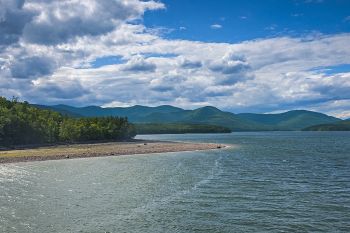Water Supply & Regulation: Difference between revisions
From ASDSO Dam Safety Toolbox
Rmanwaring (talk | contribs) No edit summary |
No edit summary |
||
| Line 5: | Line 5: | ||
|image= | |image= | ||
<!-- Add image file name --> | <!-- Add image file name --> | ||
ashokan.jpg | |||
|link= | |link= | ||
<!-- | <!--https://en.wikipedia.org/wiki/Ashokan_Reservoir--> | ||
|caption= | |caption= | ||
< | The Ashokan Reservoir, located in the Catskill Mountains, is one of several reservoirs that were built for the New York City water supply system in the early 20<sup>th</sup> century ([https://en.wikipedia.org/wiki/Ashokan_Reservoir Wikipedia]) | ||
}} | }} | ||
Revision as of 15:42, 15 September 2022

|
| The Ashokan Reservoir, located in the Catskill Mountains, is one of several reservoirs that were built for the New York City water supply system in the early 20th century (Wikipedia) |
Many dams create reservoirs that store and supply water for a multitude of uses. This storage can be used to lessen the impact of a drought or water shortage. Water supply uses include fire control, agricultural production, domestic and industrial water supply, and more. In addition to storage, dams can be used to regulate fluctuations in natural stream flows. This can be helpful for domestic and agricultural uses of water as well as providing supplemental releases in times of drought to maintain aquatic habitat.
Revision ID: 3098
Revision Date: 09/15/2022
